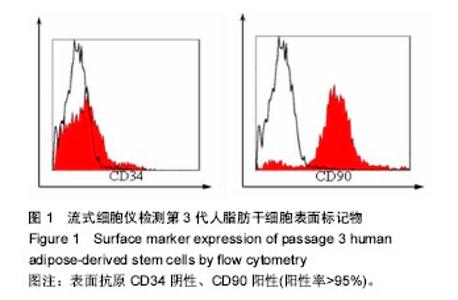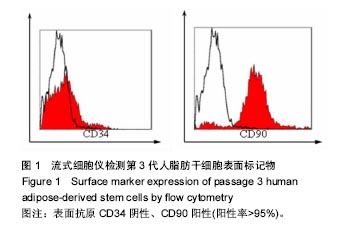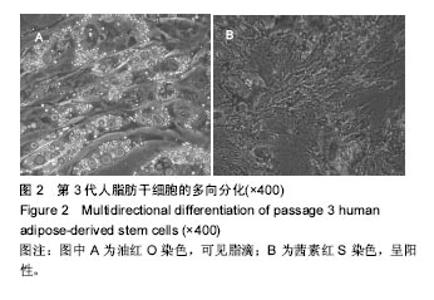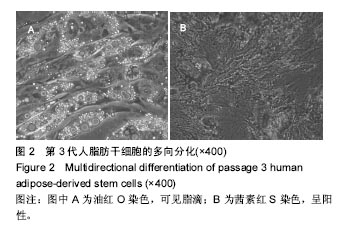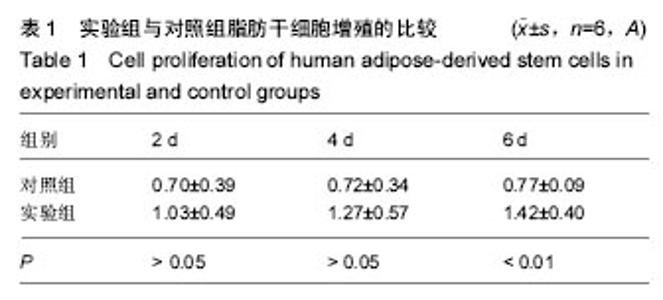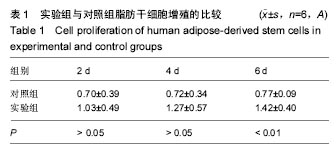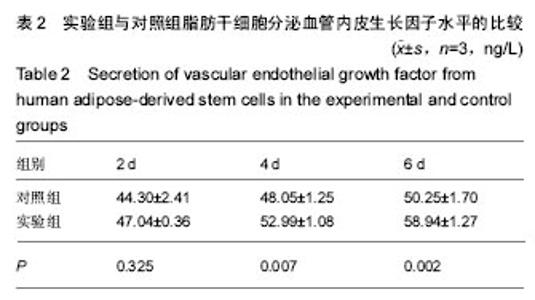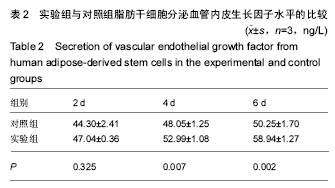| [1]Cunningham BL,Lokeh A,Gutowski KA.Saline-filled breast implant safty and efficacy:a multicenter retrospective review.Plast Reconstr Surg.2000;105(6):2143-2149.[2]戚可名.女性整形美容外科学[M].北京:人民军医出版,2001: 673-674.[3]Ryuto M,Ono M,lzumi H,et al.Induction of vascular endothelial growth factor by tumor necrosis factor alpha in human glioma cells.Possible roles of SP-1.J Biol Chem. 1996;27(45):28220-28228.[4]Hong S,Traktuev J,March KL,et al.Therapeutic potential of adipose-derived stem ce11s in vascsular growth and tissue repairs.Curr Opin Organ Transplant.2010;15(1): 86-91[5]杨超,邢新,徐达圆,等.脂肪干细胞-透明质酸复合物促进放射性复合损伤创面愈合的初步研究[J].中国修复重建外科杂志, 2011, 25(12):1499-1501.[6]Hattori H,Masuoka K,Sato M,et al.Bone formation using human adipose tissue-derived stromal cells and a biodegradable scaffold.J Biomed Mater Res B Appl Biomater. 2006;76(1):230-239.[7]张云松,高建华,鲁峰,等.I型胶原支架材料与人脂肪干细胞体外生物相容性研究[J].南方医科大学学报,2007,27(2):223-225[8]陆伟,金岩,张勇杰,等.脂肪组织来源干细胞复合胶原构建组织工程皮肤修复皮肤缺损[J].实用口腔医学杂志, 2007,23(2): 161-164.[9]Wosnitza M,Hemmrich K,Pallua N.Plasticity of human adipose stem cells to perform adipogenic and endothelial differentiation.Differentiation.2007;75(1):12-23.[10]Ribatti D.Chick embryo chorioallantoic membrane as a useful tool to study angiogenesis.Int Rev Cell Mol Biol.2008;270: 181-224. [11]唐昱,盛国太,钟志英.丹红注射液促进鸡胚绒毛尿囊膜血管生成的实验研究[J].中西医结合心脑血管病杂志, 2010,8(3): 3110-3111[12]Sun X,Altalhi W,Nunes SS.Vascularization strategies of engineered tissues and their application in cardiac regeneration.Adv Drug Deliv Rev.2016;96:183-194.[13]Yao C,Roderfeld M,Rath T,et al.The impact of proteinase-induced matrix degradation on the release of VEGF from heparinized collagen matrices.Biomaterials. 2006;27(8): 1608-1616.[14]Steffens GC,Yao C,Prevel P,et al.Modulation of angiogenic potential of collagen matrices by covalent incorporation of heparin and loadig with vascular endothelial growth factor.Tissue Eng.2004;10(9-10):1502-1509.[15]Koch S,Yao C,Grieb G,et al.Enhancing angiogenesis in collagen matrices by covalent incorporation of VEGF.Mater Sci: Mater Med.2006;17:735-741.[16]Lindroos B,Suuronen R,Miettinen S.The potential of adipose stem cells in regenerative medicine.Stem Cell Rev.2011;7(2): 269-291.[17]李晓童,支运霞,张喜,等.脂肪源性干细胞与胶原海绵支架的相容性[J].解剖学杂志,2012,35(6):741-744,769.[18]徐永飞,张建文,暴志国,等.脂肪来源干细胞复合不同生物支架在裸鼠皮下的促血管化作用[J].郑州大学学报(医学版), 2013, 39(6): 773-776.[19]许颖溦,刘林嶓,徐永飞,等.脂肪干细胞复合Ⅰ型胶原对裸鼠移植组织生长的影响[J].郑州大学学报(医学版), 2014,40(2): 255-257.[20]乐音子,陈灵,任伟业,等.胶原海绵对创面愈合的影响[J].中国基层医药,2014,21(13):1954-1956.[21]魏庆,任伟业,张晶,等.胶原海绵在慢性下肢溃疡中应用临床疗效观察[J].安徽医药,2012,16(7):949-951.[22]陈运,邵大畏,任伟业,等.胶原海绵填充甲状腺手术残腔与止血疗效临床观察[J].中国医药指南,2012,10(5):79-80.[23]邵大畏,陈运,任伟业,等.胶原海绵填充乳腺缺损20例临床观察[J].中国医药指南,2012,10(2):85-86.[24]于志永,付勤,张涛,等.脂肪间充质干细胞复合壳聚糖-胶原-硫酸软骨素多孔支架体外成软骨能力的实验研究[J].中国骨质疏松杂志,2009,15(3):165-170.[25]杨震,李波,周焯家,等.人脂肪干细胞体外培养及细胞载体复合物诱导培养[J].中国老年学杂志,2014,34(18):5187-5190.[26][26] Han B,Wang HC,Li H,et al.Nucleus pulposus mesenchymal stem cells in acidic conditions mimicking degenerative intervertebral discs give better performance than adipose tissue-derived mesenchymal stem cells.Cells Tissues Organs. 2014;199(5-6):342-352. [27]李琳,姚昶,朱永康,等.胶原海绵促进人脐静脉血管内皮细胞生长的体外实验研究[J].临床和实验医学杂志, 2014,13(18): 1494-1496.[28]周勇,任伟业,邵大畏,等.胶原海绵促进创面止血与血管新生的实验研究[J].湖南中医杂志,2012,28(3):140-141,165. |
